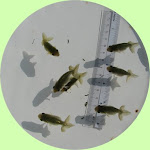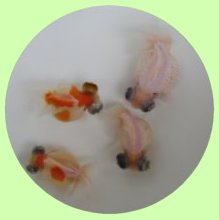The Party Has Begun
 The road to success is always under construction.
The road to success is always under construction.
~Lily Tomlin
The sudden change in atmospheric pressure from yesterday's downpour had triggered the spawning of TVRs this morning. About 4000~6000 eggs were collected from 2 females belonging to different sub-lines.
I track all spawning information and bloodlines very closely. Most of the time, I will hand-spawn two or more males from the same bloodline to one female. More males increase the fertility rate and the chances of good parent matching to produce good babies. There are also times that I will breed one male to a female if I know that the particular combination is good or I want to enhance certain genetic traits in that combination.
From this juncture, there are numerous huddles to clear before we can "make" some decent fishes. Unfortunately, not all spawns will develop well - sudden temperature swings, bad fertility and bad quality of eggs/milt are the major factors affecting the outcome of the hatching.
Success is also not assured even after the eggs are hatched. Fries that are not able to swim for more than 3 days after hatching, high percentage of deformities like bent body, fused caudal tail joints, deformed eyes are also signs of problem with hatching or the health of the parent fishes. Breeders in cooler climates use the heater to control the water temperature during incubation of the eggs. In tropical countries, we can use the air conditioner to lower the temperature near to 20°C. More spawns are expected in the weeks to come. The fertility yield of eggs is usually, but not always, better in subsequent spawns.
Breeders in cooler climates use the heater to control the water temperature during incubation of the eggs. In tropical countries, we can use the air conditioner to lower the temperature near to 20°C. More spawns are expected in the weeks to come. The fertility yield of eggs is usually, but not always, better in subsequent spawns.
Pictures:
1) party time 2) hand spawning 3) eggs collected 4) porous fine netting media for collecting eggs


























